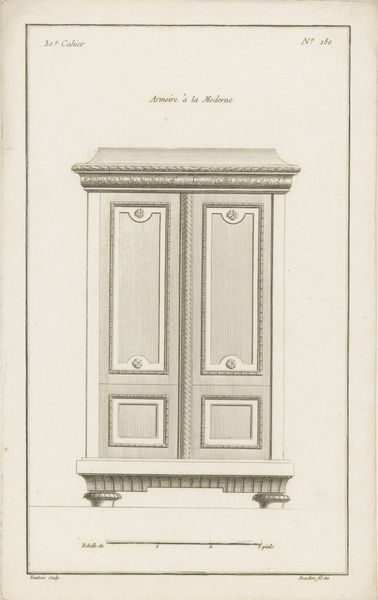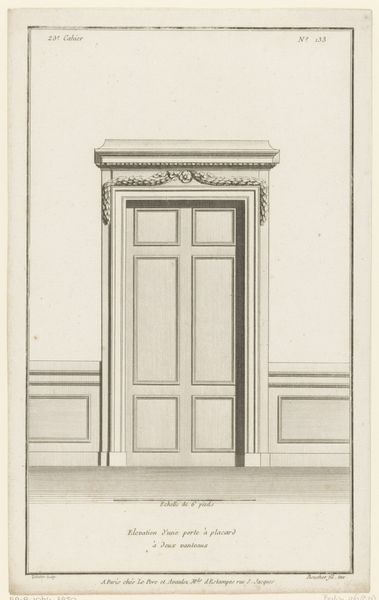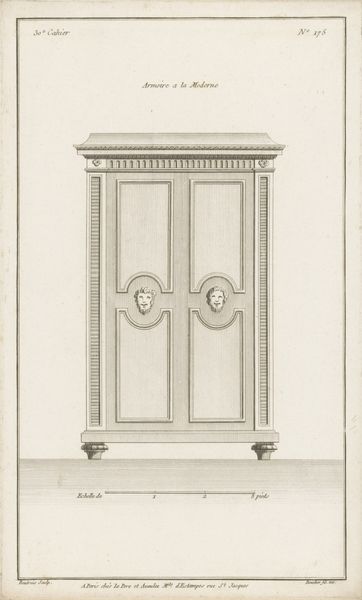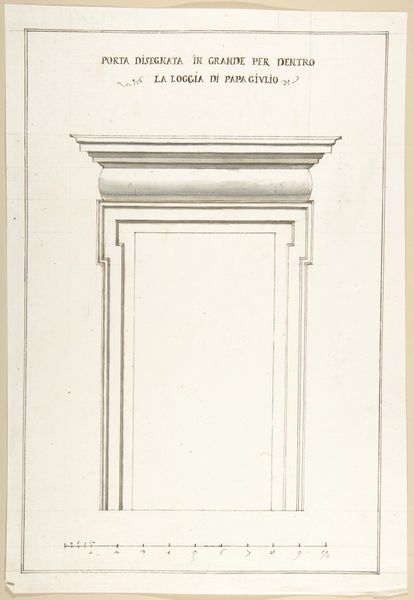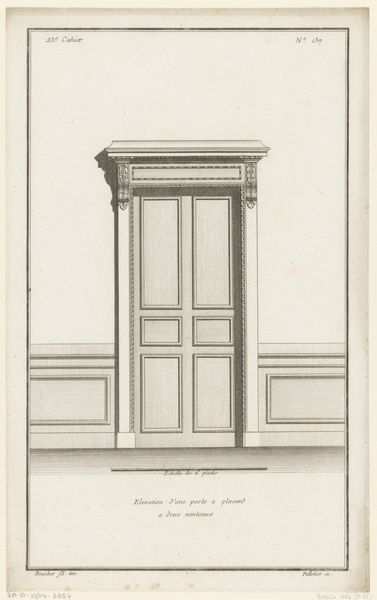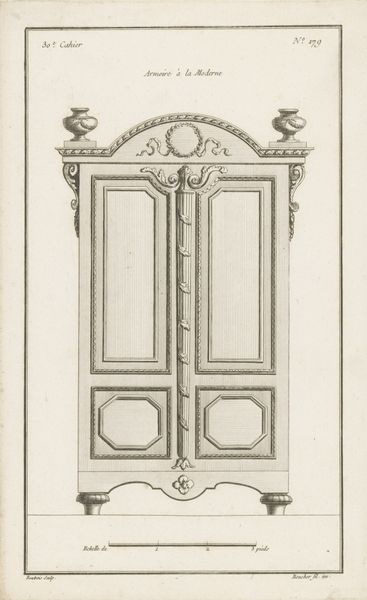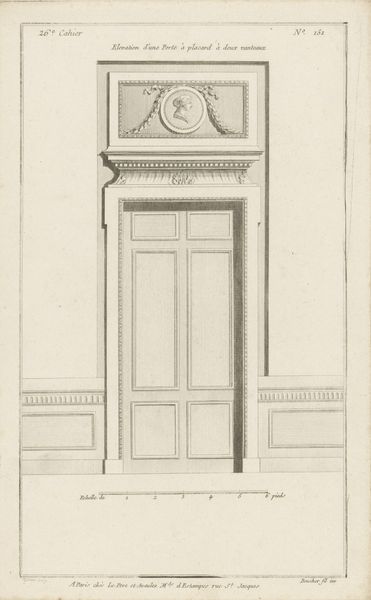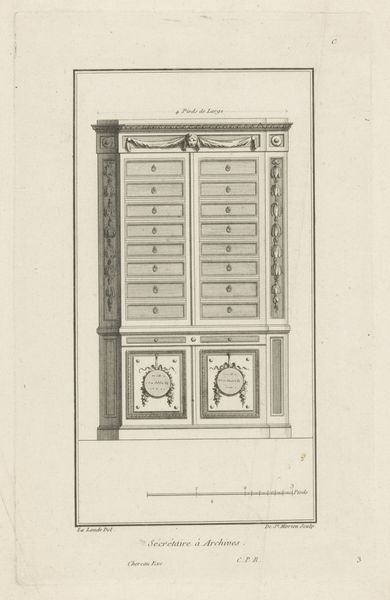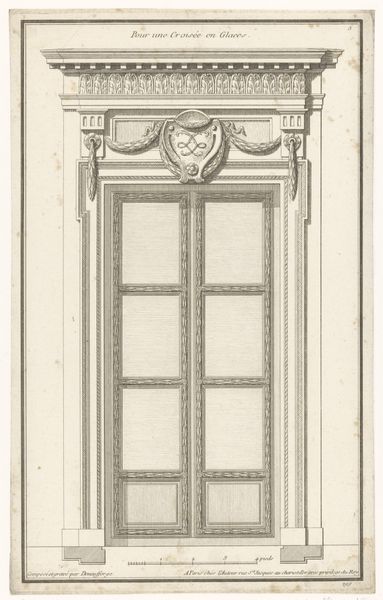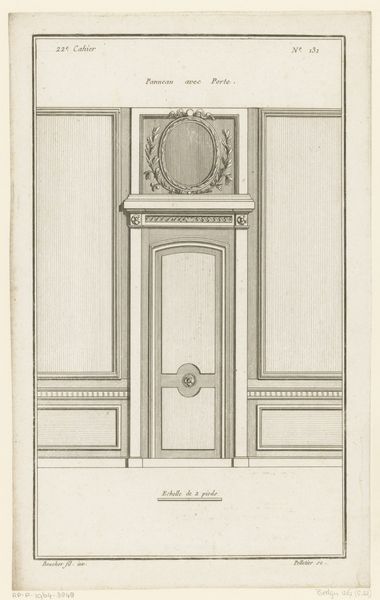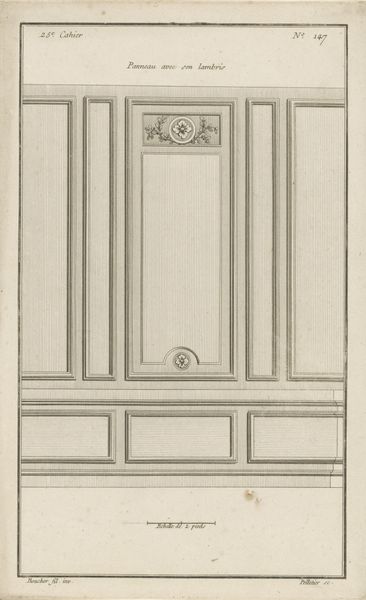
drawing, print, paper, engraving, architecture
#
drawing
#
neoclacissism
# print
#
paper
#
form
#
line
#
engraving
#
architecture
Dimensions: height 324 mm, width 203 mm
Copyright: Rijks Museum: Open Domain
Curator: Looking at this engraving titled "Kast met bloemmotief," which translates to "cabinet with floral motif," created between 1772 and 1779 by Philibert Boutrois. The Rijksmuseum is fortunate to have this detailed rendering. Editor: My first impression is of a rigid elegance. The symmetry is so deliberate, almost imposing, but the delicate lines soften the overall feel. It seems rather restrained, somehow. Curator: The restraint you perceive is likely intentional. Boutrois was working within the burgeoning Neoclassical movement, which emphasized order, reason, and a return to classical forms in response to the more flamboyant Rococo style. We can see those influences here in the clean lines, the geometric shapes, and the balanced composition. This wasn't just about aesthetics; it reflected the era’s values. Editor: Yes, there’s certainly an imposing structure with that double-door setup, framed by such intricate details. The small floral motifs soften it somewhat but do not quite redeem the starkness. I am fascinated by the way the light appears to play across the recessed panels, creating a subtle rhythm. Did this drawing act as an architect’s reference? Curator: Absolutely. Drawings like these were instrumental. Engravings could be widely distributed, offering artisans and furniture makers throughout Europe access to the latest designs emanating from centers like Paris. These kinds of patterns aided in spreading cultural and stylistic values across regions. The furniture itself becomes a status symbol with widespread influence. Editor: So, it’s not just a pretty picture but a blueprint for social and stylistic emulation! Examining it purely formally, there's a clear hierarchy in the design, which gives it weight, almost authoritarianism. However, the engraving has this soft paper aesthetic that, for me, speaks of an almost fragile beauty. Curator: I see your point. The drawing, precisely because it captures an ideal intended for materialization, highlights a societal aspiration—order and taste accessible through crafted objects, an element democratizing culture. The piece shows that art shapes behaviour, and culture dictates desire. Editor: So well explained. It highlights the blend of rigidity and elegance perfectly, reflecting societal and artistic nuances through pure visual delight. Thank you for that deeper insight.
Comments
No comments
Be the first to comment and join the conversation on the ultimate creative platform.
